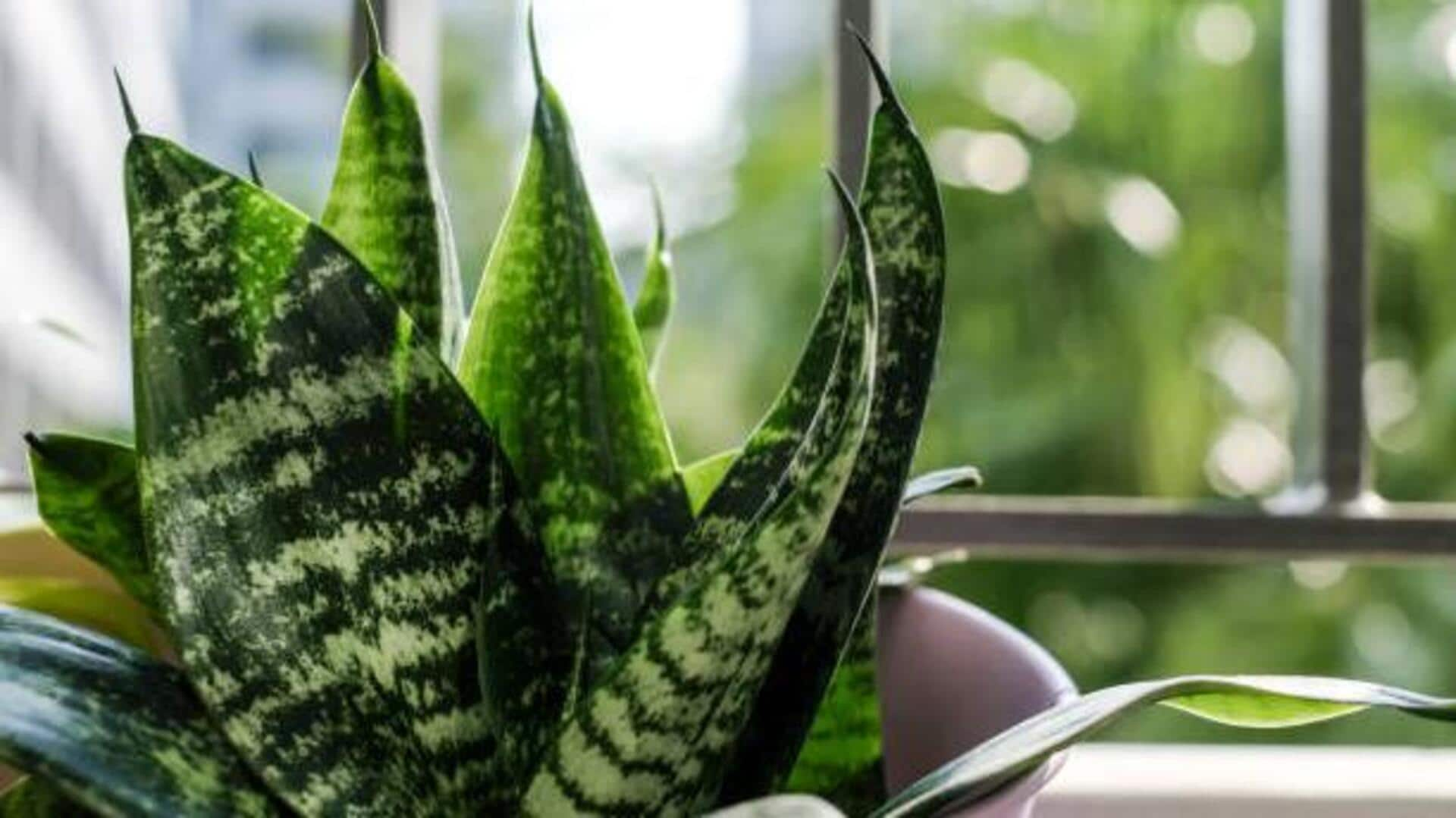
How to keep your snake plants healthy
What's the story
Snake plants, known for their resilience and air-purifying qualities, are a popular choice for indoor greenery. However, maintaining their lush green appearance requires more than just occasional watering. By following some lesser-known tips, you can ensure your snake plants remain vibrant and healthy all year round. These insights focus on optimizing conditions that cater to the plant's natural preferences, ensuring they thrive in any indoor setting.
Light management
Optimal light conditions
Snake plants prefer indirect sunlight but can tolerate low-light conditions. To keep them greenest, place them near a window with filtered light or in a well-lit room. Avoid direct sunlight as it can scorch the leaves. If natural light is limited, consider using artificial grow lights to supplement their needs. Ensuring consistent lighting will help maintain their vibrant color and overall health.
Hydration strategy
Watering techniques
Overwatering is the most common mistake with snake plants. Let the soil dry out completely between waterings to avoid root rot. In warmer months, water every two weeks; in cooler months, lessen the frequency to once a month or even less. Always use well-draining soil and pots with drainage holes to prevent water from sitting at the roots.
Climate control
Temperature preferences
Snake plants do best in temperatures between 15 degrees Celsius and 30 degrees Celsius (59 degrees Fahrenheit and 86 degrees Fahrenheit). They are sensitive to cold drafts and sudden temperature changes that can damage the leaves. Keep them away from windows on winter nights or air conditioning vents on summer days to ensure stable conditions for growth.
Soil quality
Soil composition
The right soil mix is also important for the health of snake plants. Use a free-draining potting mix meant for succulents or cacti, which is usually mixed with sand or perlite for aeration. This keeps them from waterlogging while giving them essential nutrients to ensure healthy growth.
Pest control
Pest prevention measures
Though largely pest-resistant, snake plants can sometimes attract pests, such as spider mites or mealybugs, if stressed by poor conditions (overwatering, insufficient light levels, etc.). Regularly check leaves for signs of infestation. If caught early, treat with insecticidal soap spray, minimizing harm and effectively managing pest issues. This avoids resorting to harsh chemicals (often used elsewhere), unnecessarily risking plant wellbeing and long-term sustainability indoors, alike.